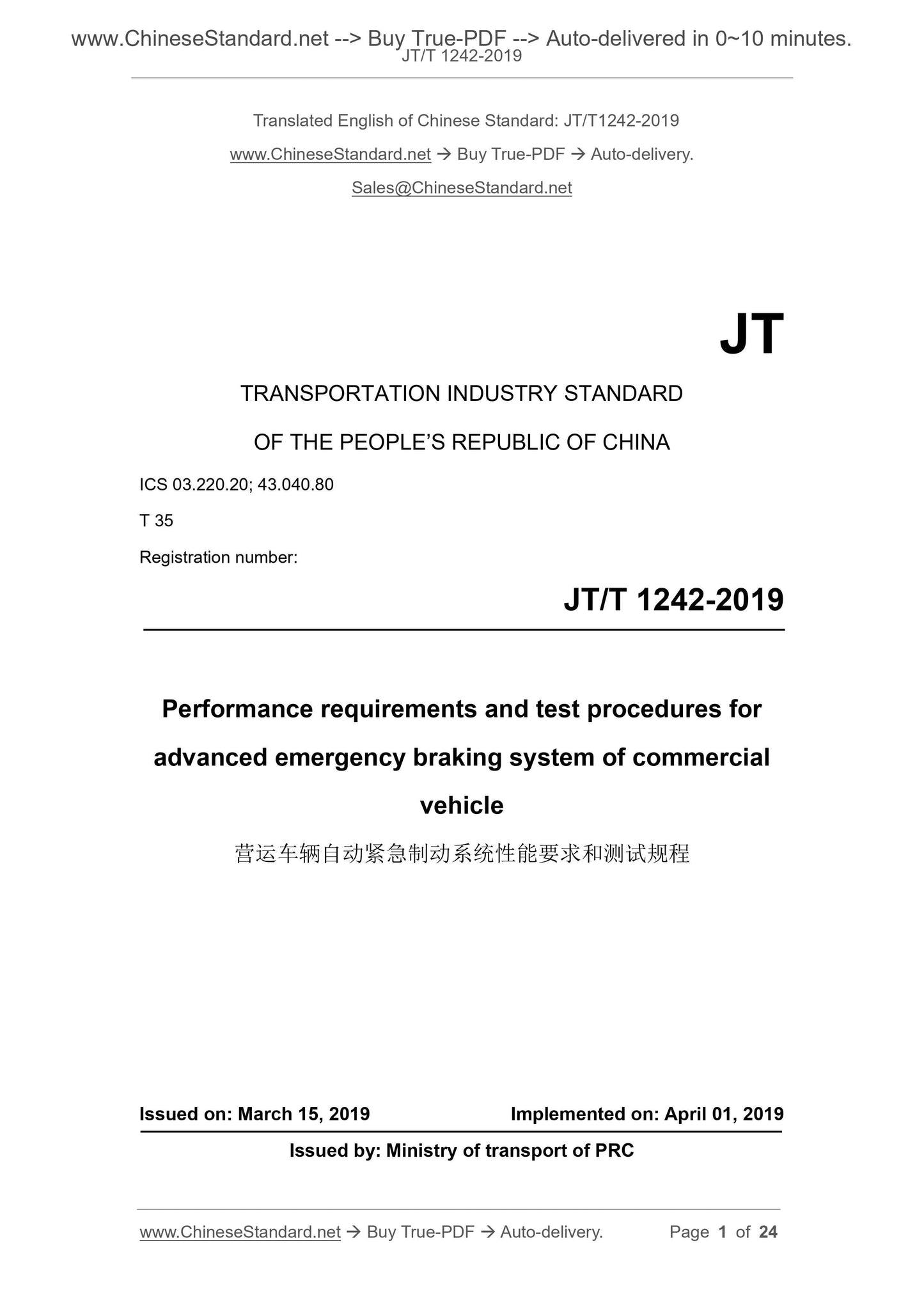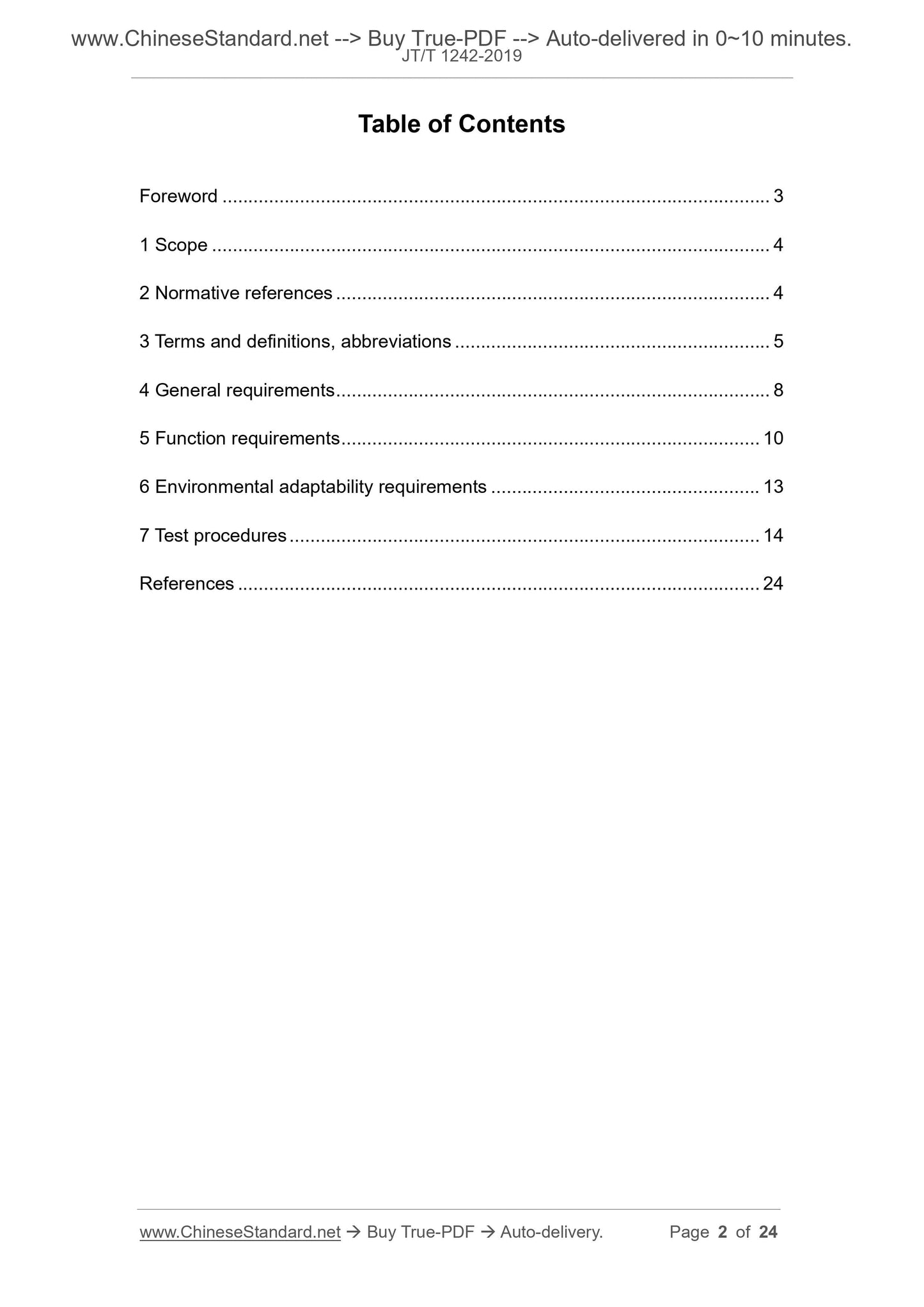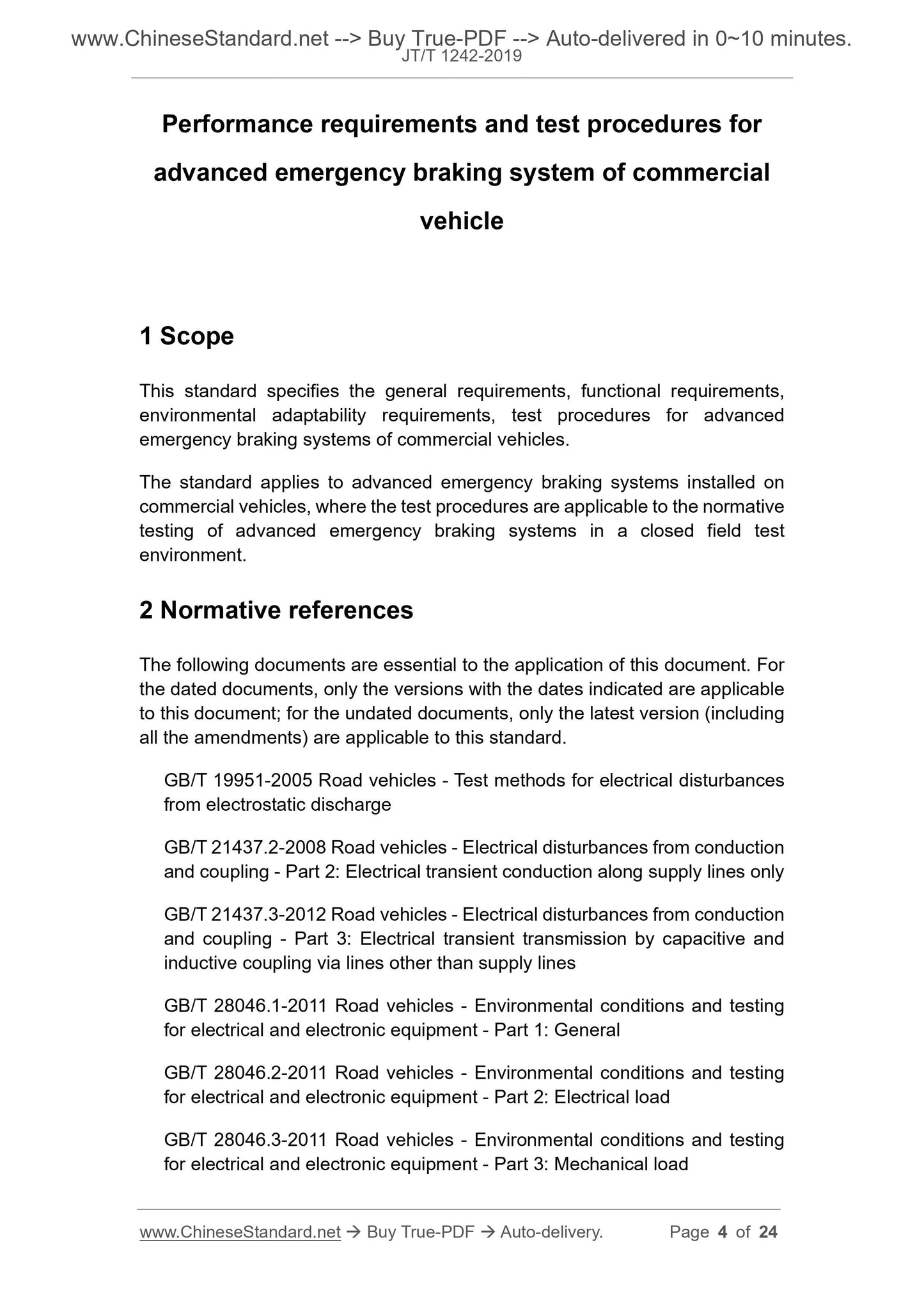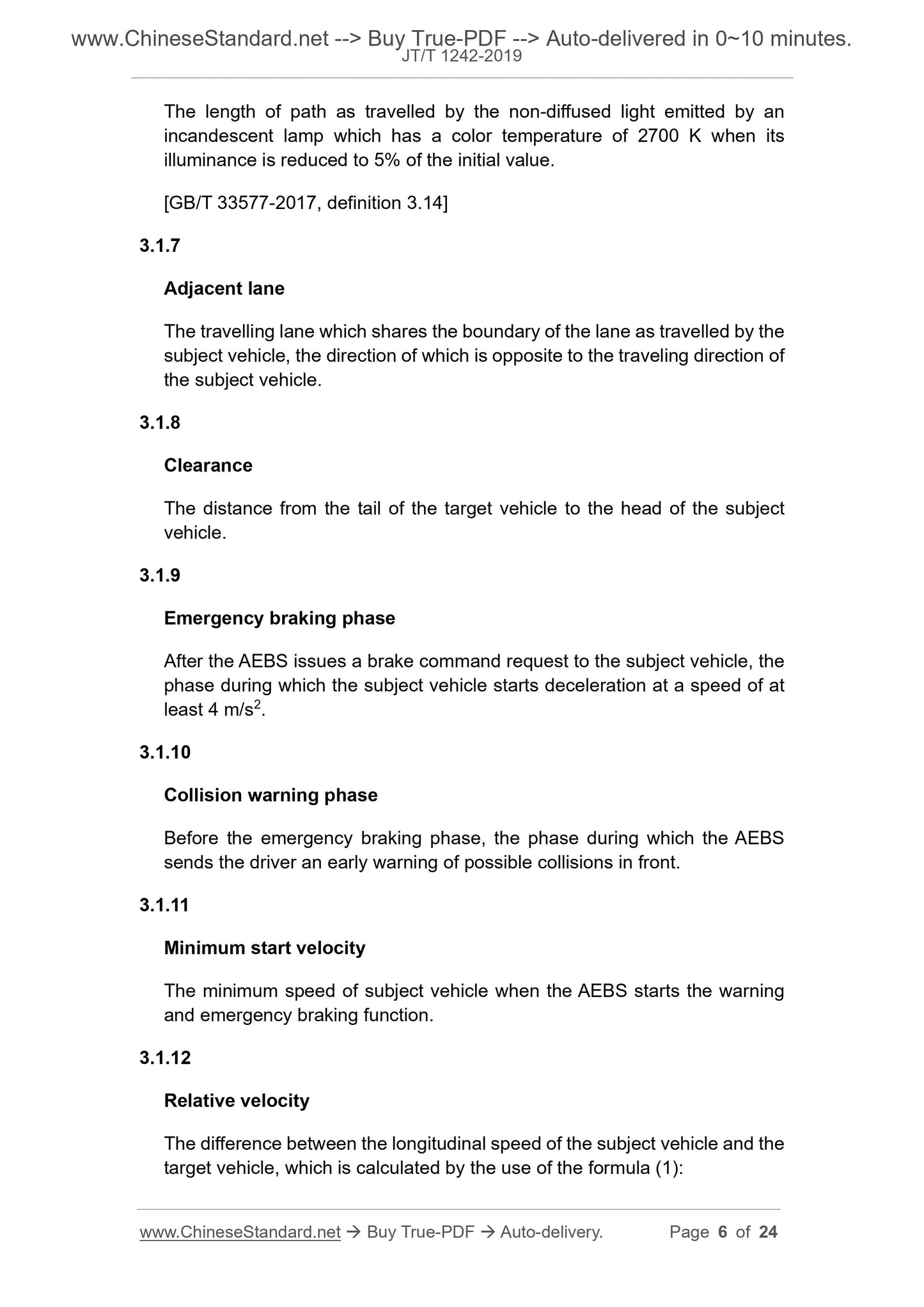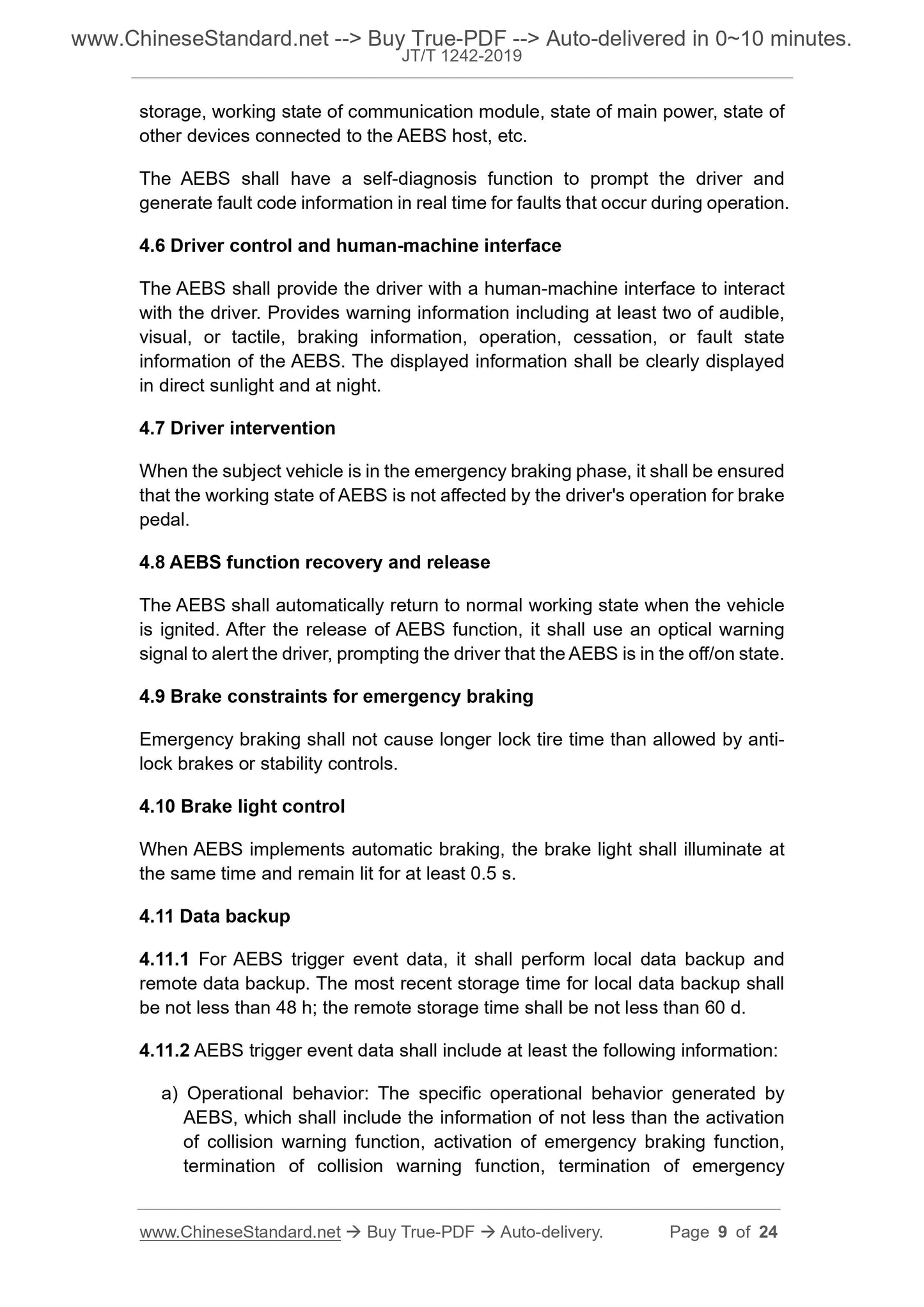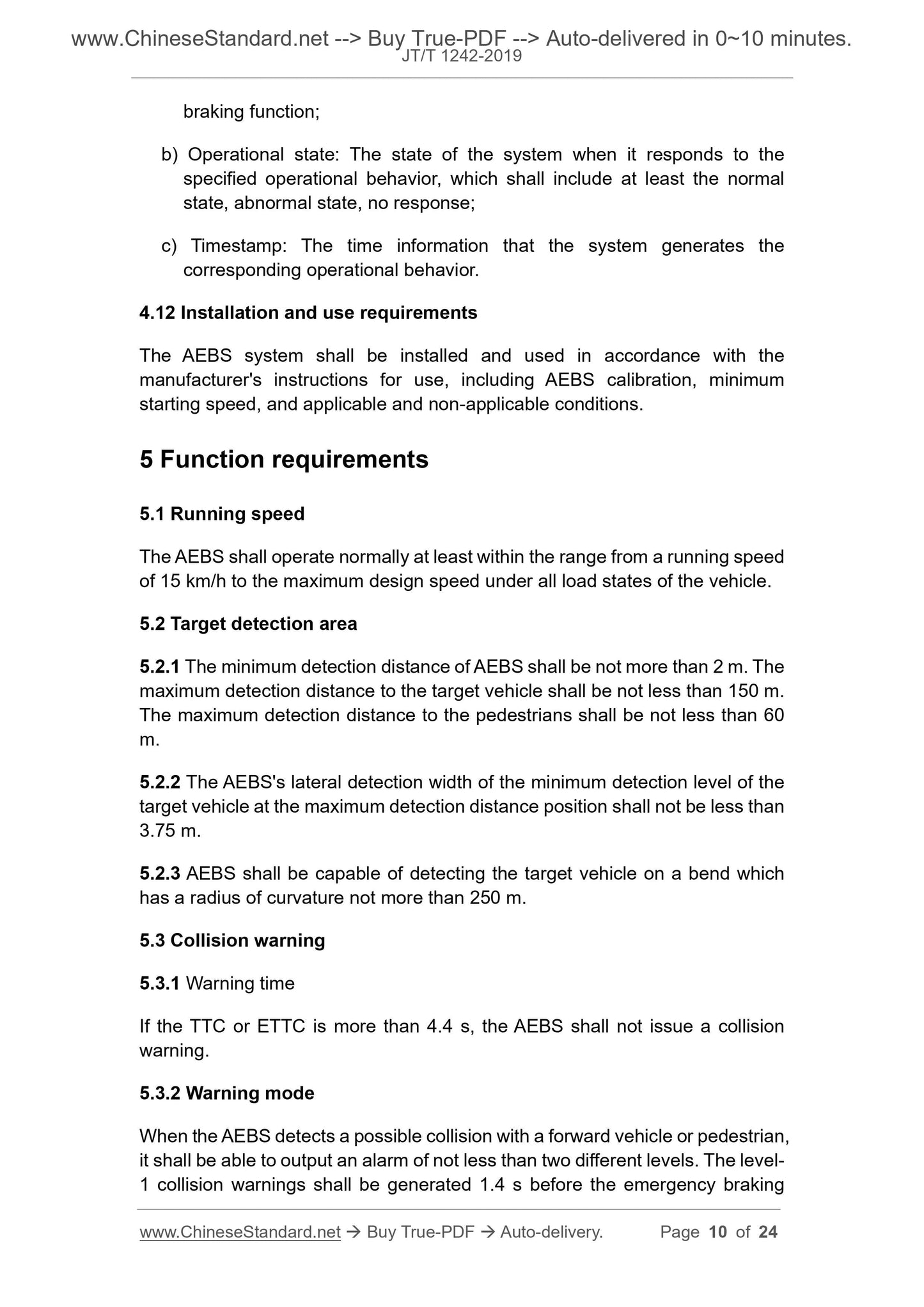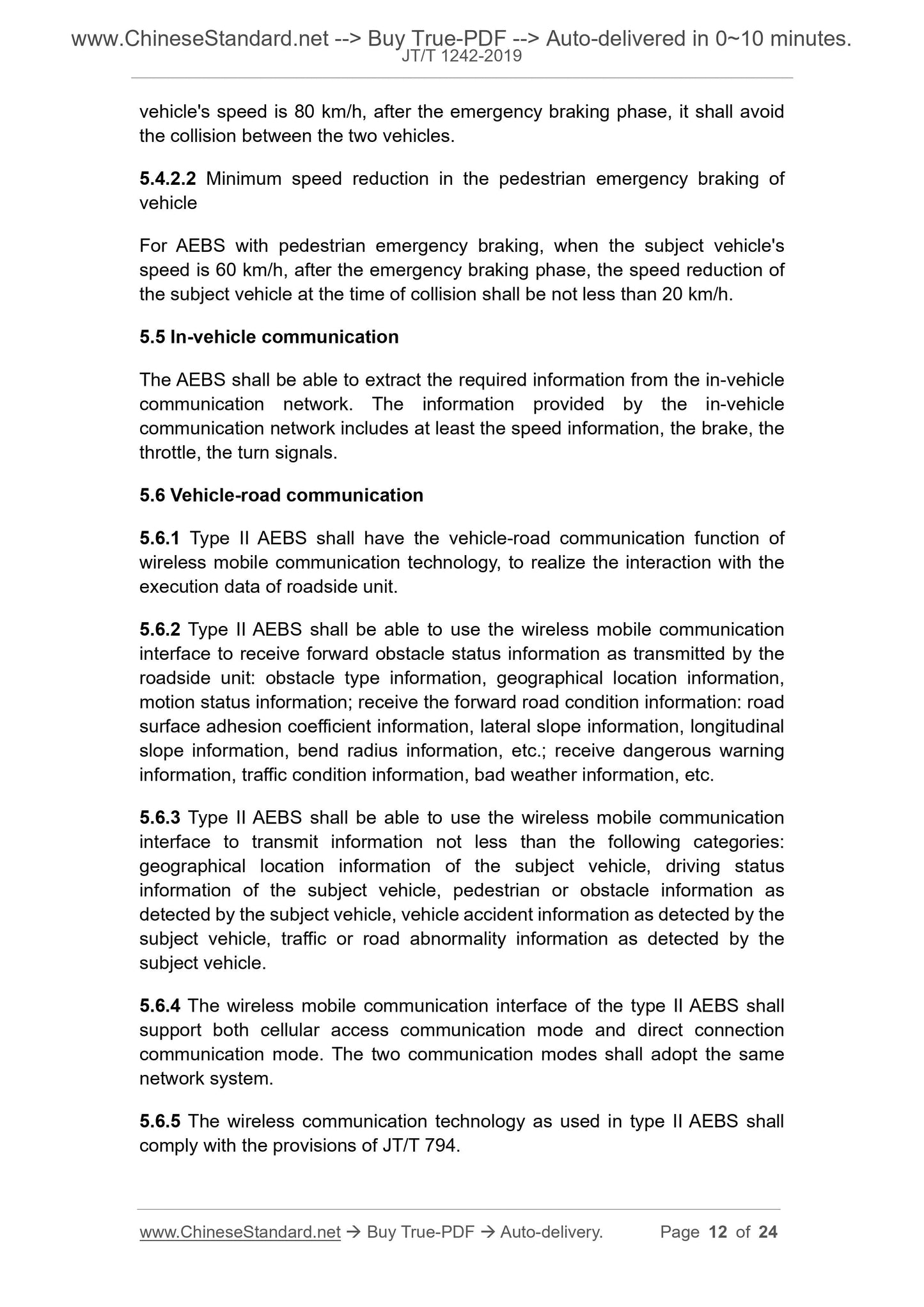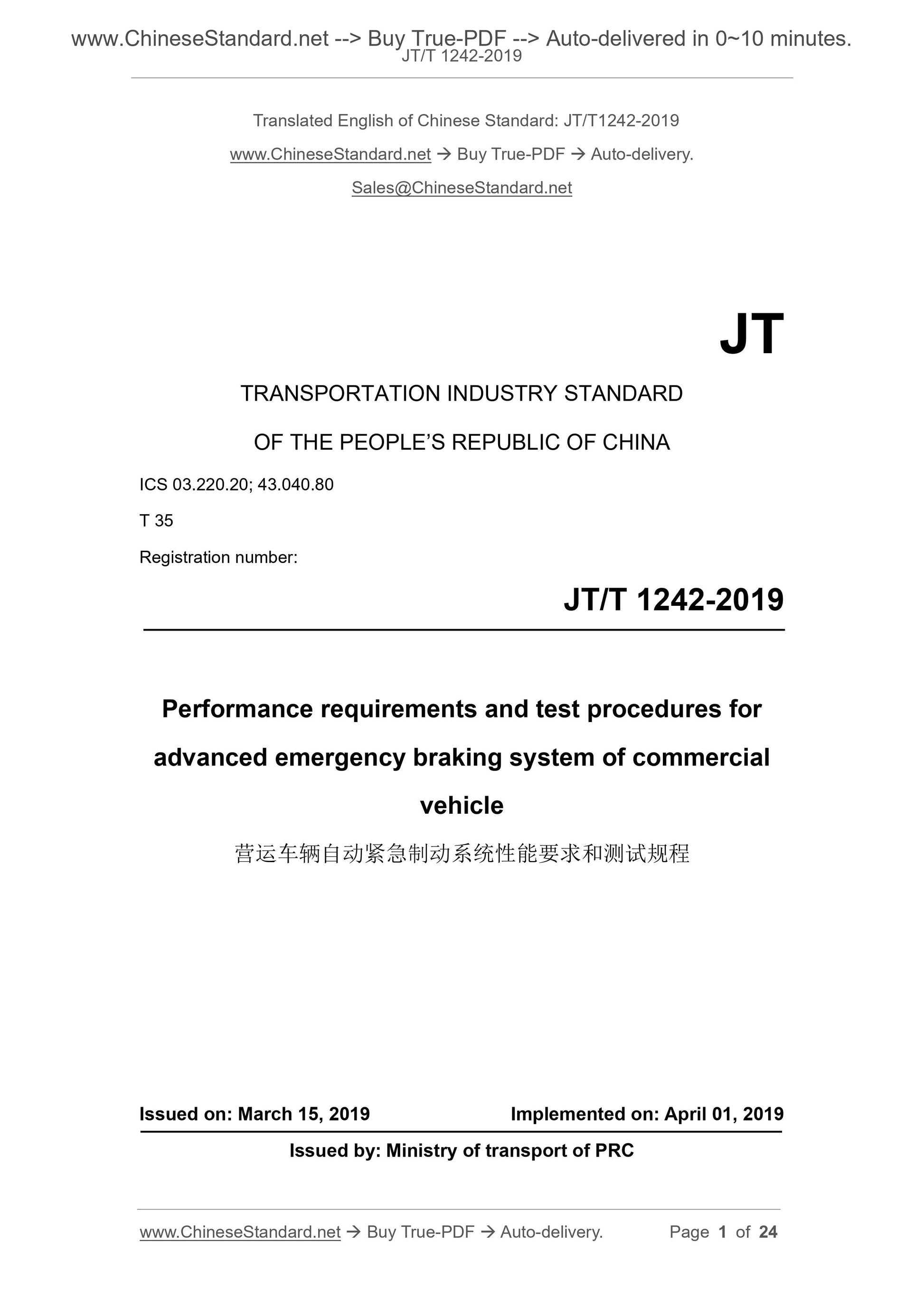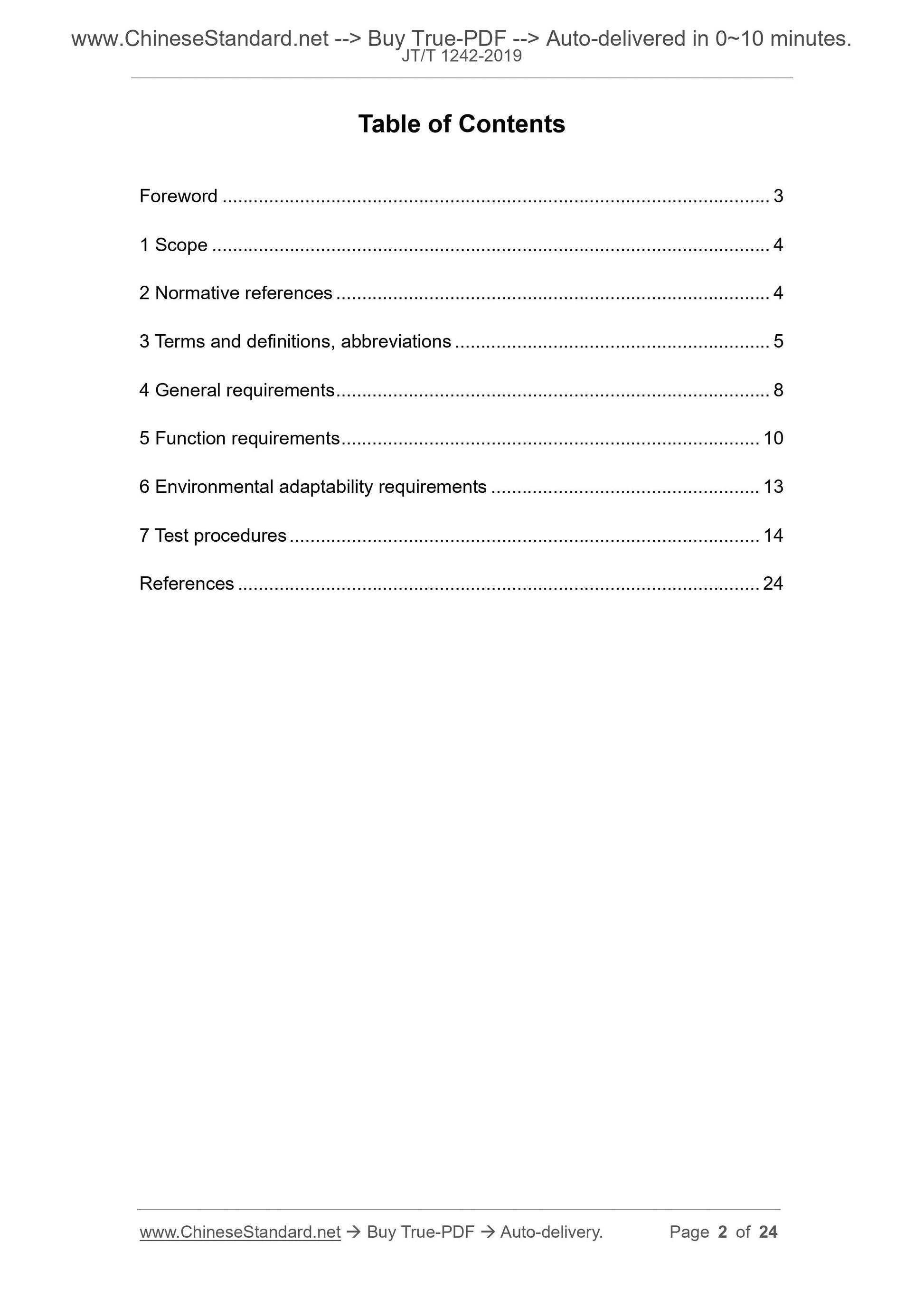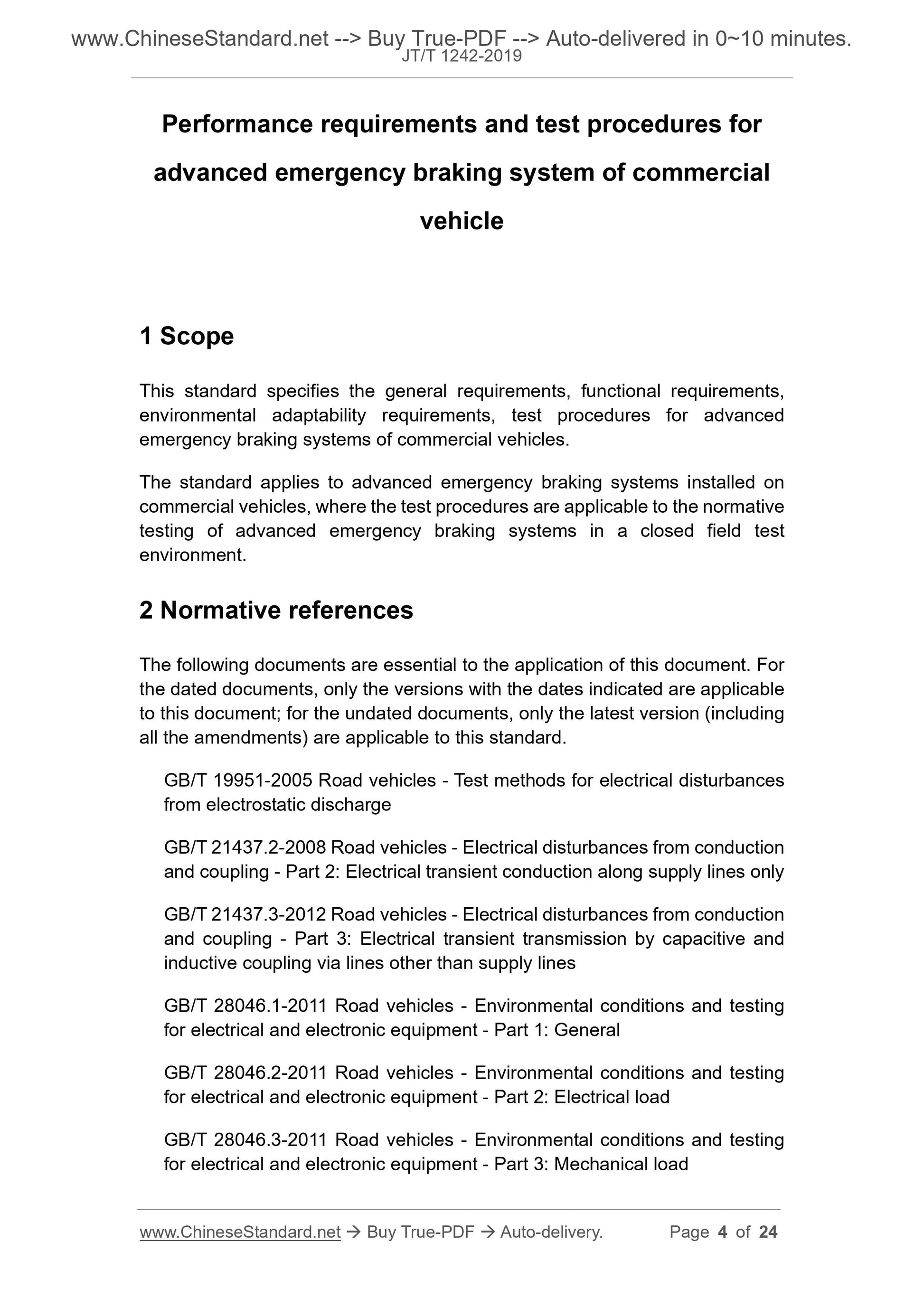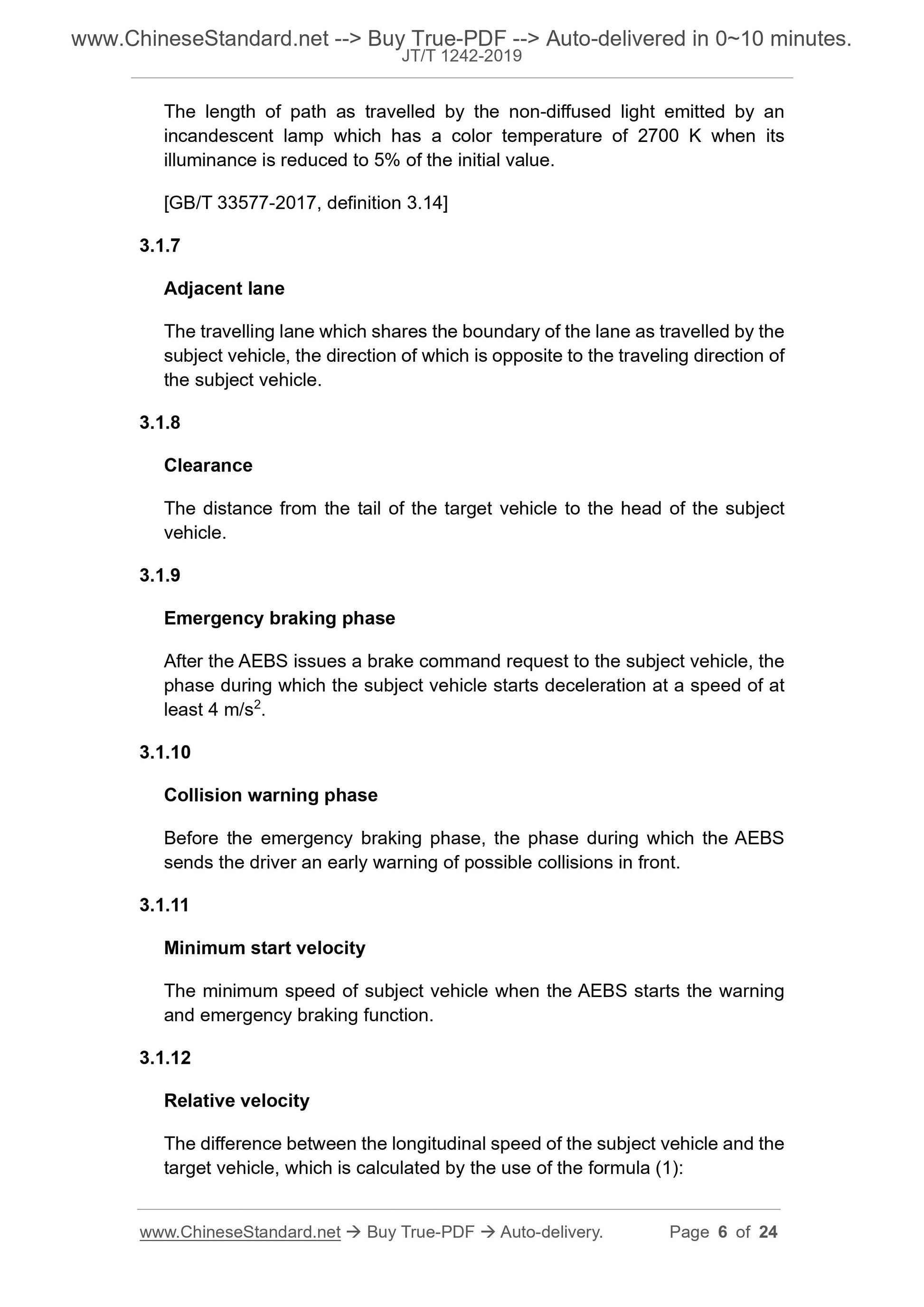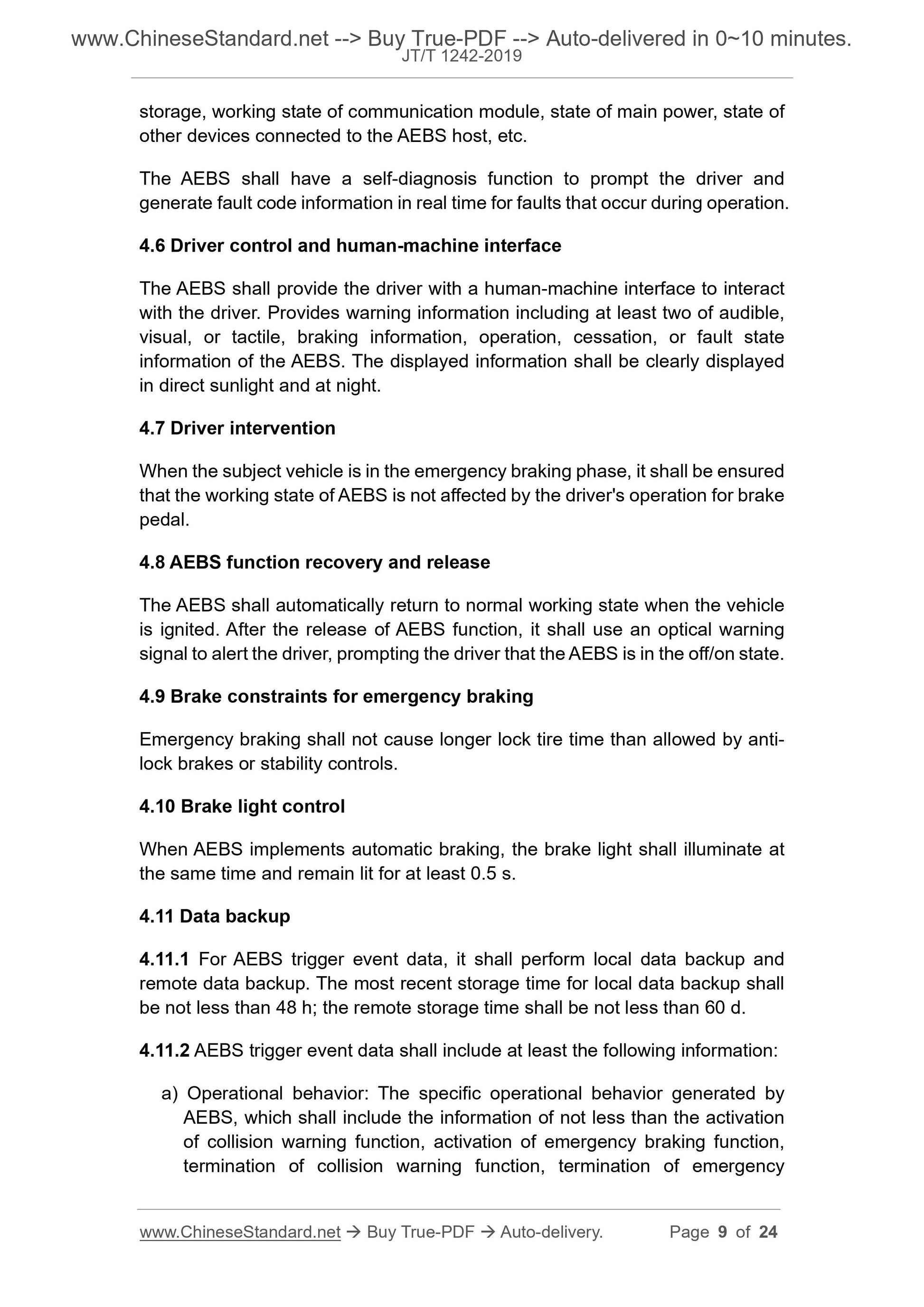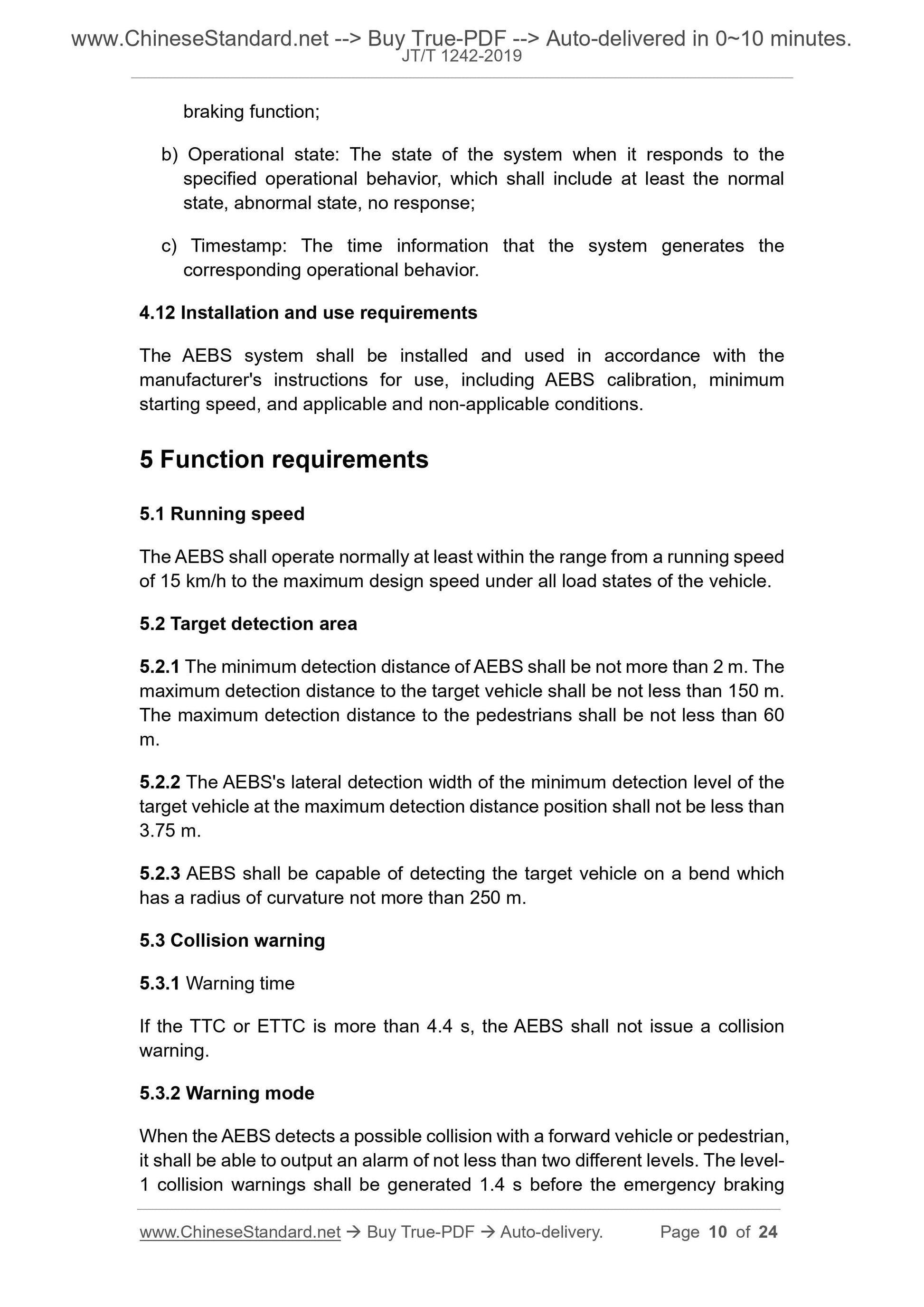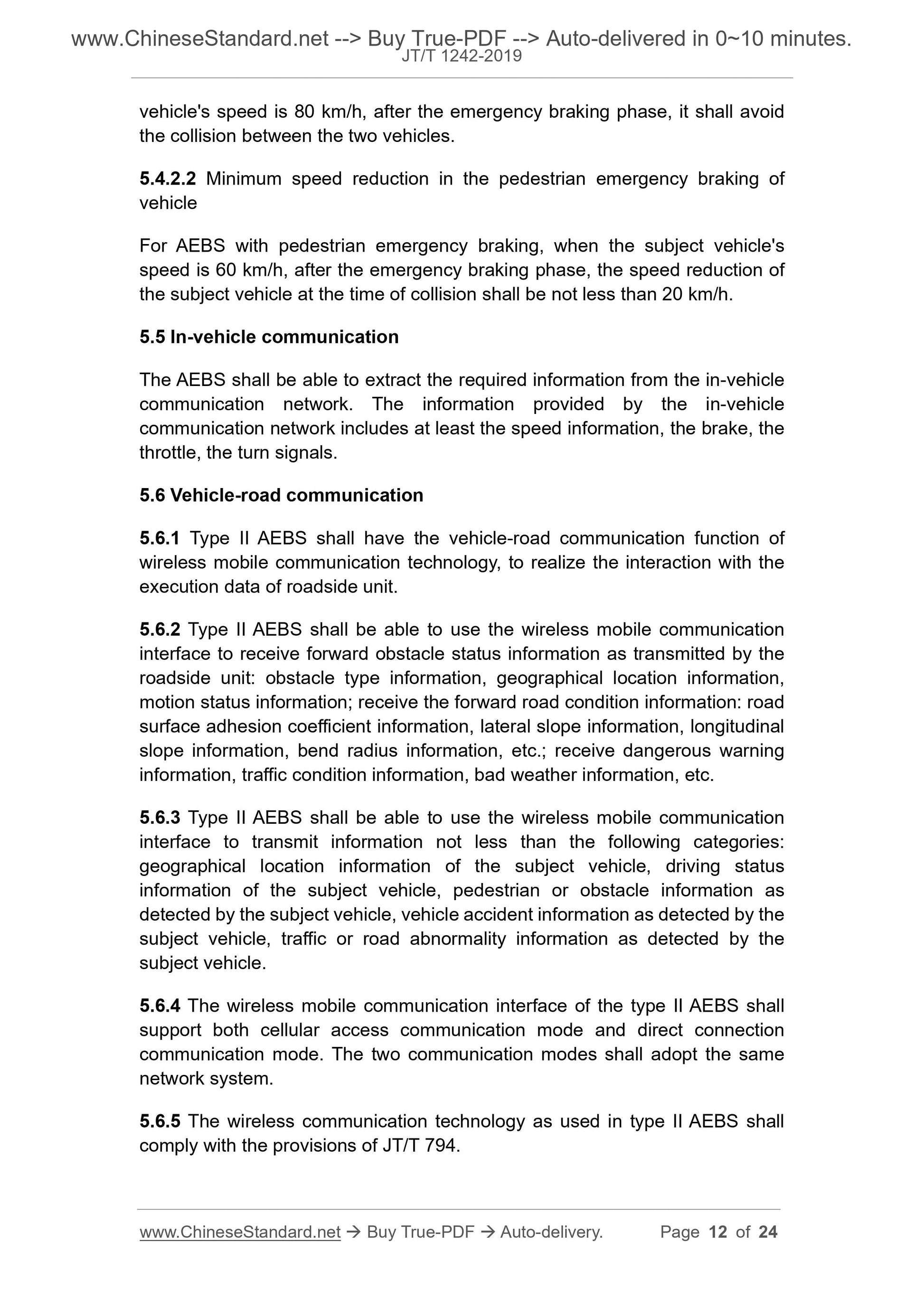1
/
of
7
www.ChineseStandard.us -- Field Test Asia Pte. Ltd.
JT/T 1242-2019 English PDF (JT/T1242-2019)
JT/T 1242-2019 English PDF (JT/T1242-2019)
Regular price
$265.00
Regular price
Sale price
$265.00
Unit price
/
per
Shipping calculated at checkout.
Couldn't load pickup availability
JT/T 1242-2019: Performance requirements and test procedures for advanced emergency braking system of commercial vehicle
Delivery: 9 seconds. Download (and Email) true-PDF + Invoice.Get Quotation: Click JT/T 1242-2019 (Self-service in 1-minute)
Newer / historical versions: JT/T 1242-2019
Preview True-PDF
Scope
This standard specifies the general requirements, functional requirements,environmental adaptability requirements, test procedures for advanced
emergency braking systems of commercial vehicles.
The standard applies to advanced emergency braking systems installed on
commercial vehicles, where the test procedures are applicable to the normative
testing of advanced emergency braking systems in a closed field test
environment.
Basic Data
| Standard ID | JT/T 1242-2019 (JT/T1242-2019) |
| Description (Translated English) | Performance requirements and test procedures for advanced emergency braking system of commercial vehicle |
| Sector / Industry | Highway and Transportation Industry Standard (Recommended) |
| Classification of Chinese Standard | T35 |
| Classification of International Standard | 03.220.20; 43.040.80 |
| Word Count Estimation | 17,166 |
| Date of Issue | 2019 |
| Date of Implementation | 2019-07-01 |
| Issuing agency(ies) | Ministry of Transport |
| Summary | This standard specifies the general requirements, functional requirements, environmental adaptability requirements and test procedures for automatic emergency braking systems for commercial vehicles. This standard applies to automatic emergency braking systems installed on commercial vehicles, and the test procedures apply to the normative testing of automatic emergency braking systems in a closed field test environment. |
Share
